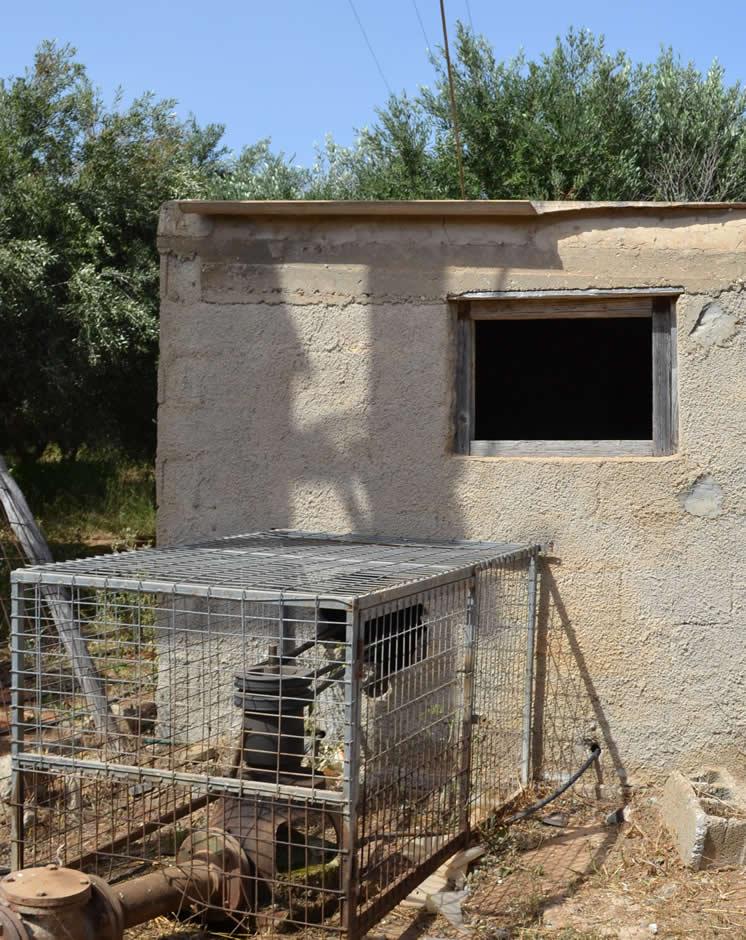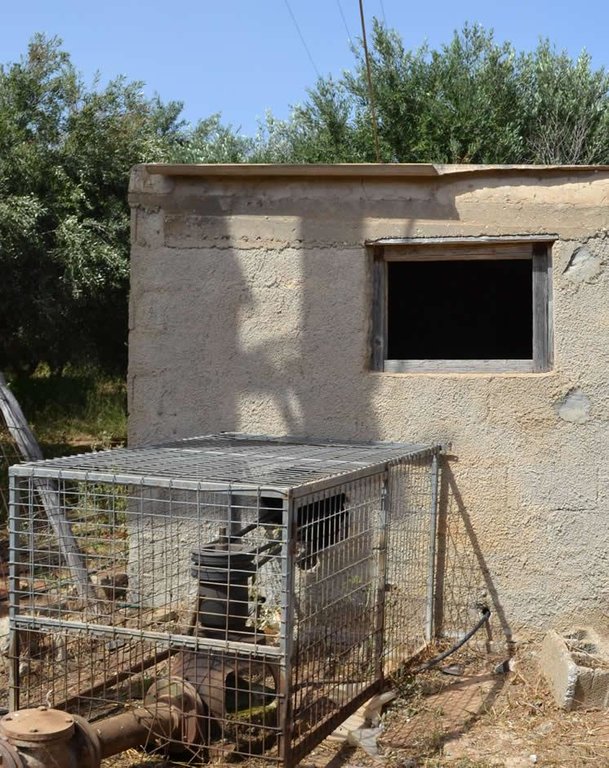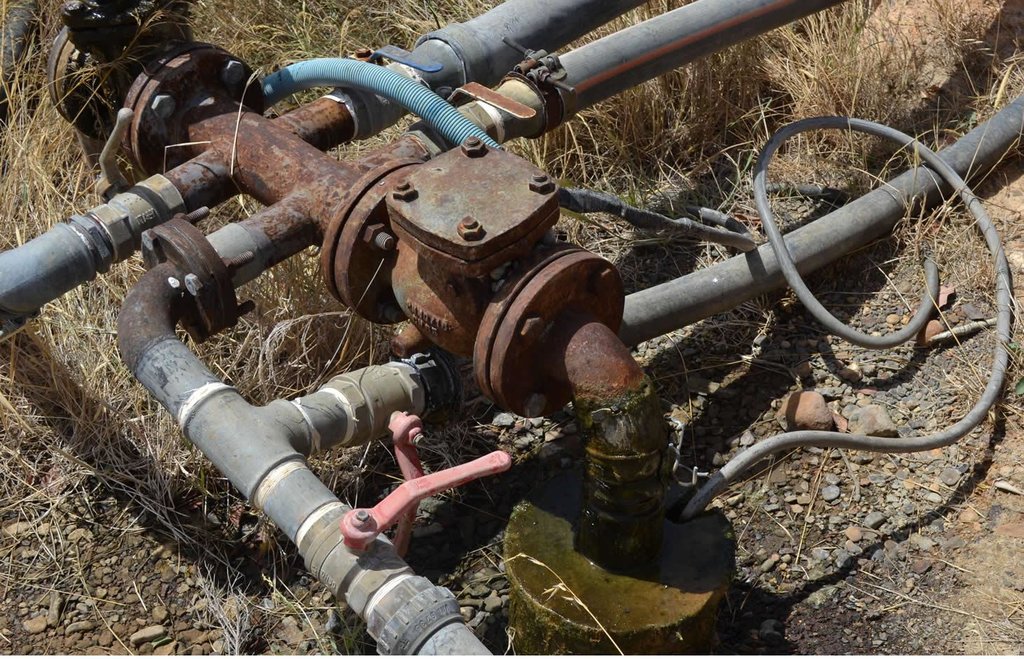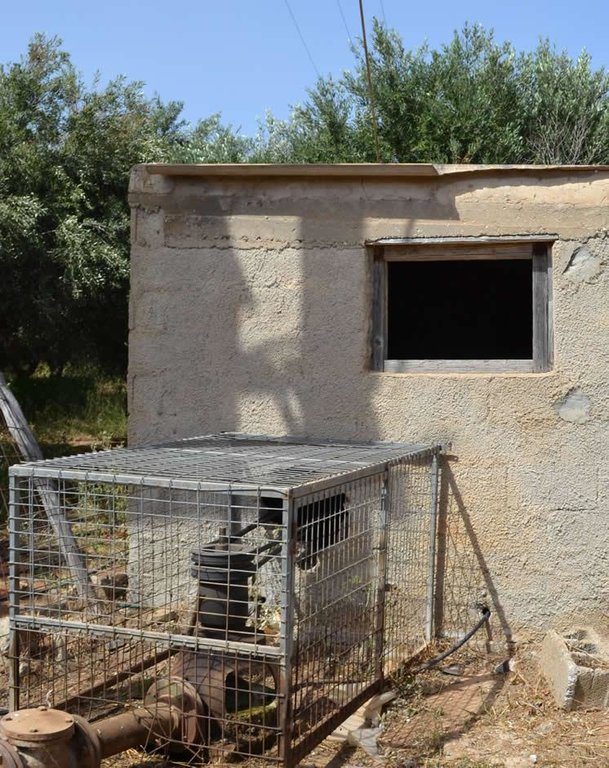Cooperative for Drilling and Exploiting a Private Water Well [Grécia]
- Criação:
- Atualização:
- Compilador/a: Ioannis Daliakopoulos
- Editor: –
- Revisor: Fabian Ottiger
Συνεταιρισμός με Σκοπό την Εγκατάσταση και Λειτουργία Ομαδικής Γεώτρηση
approaches_2619 - Grécia
Veja as seções
Expandir tudo Recolher tudo1. Informação geral
1.2 Detalhes do contato das pessoas capacitadas e instituições envolvidas na avaliação e documentação da abordagem
Especialista em GST:
Especialista em GST:
Nome do projeto que facilitou a documentação/avaliação da Abordagem (se relevante)
Preventing and Remediating degradation of soils in Europe through Land Care (EU-RECARE )Nome da(s) instituição(ões) que facilitou(ram) a documentação/avaliação da Abordagem (se relevante)
Technical University of Crete (Technical University of Crete) - Grécia1.3 Condições em relação ao uso da informação documentada através de WOCAT
Quando os dados foram compilados (no campo)?
13/12/2014
O/a compilador/a e a(s) pessoa(s) capacitada(s) aceitam as condições relativas ao uso de dados documentados através da WOCAT:
Sim
2. Descrição da abordagem de GST
2.1 Descrição curta da abordagem
A cooperative of land owners and at least one water rights owner established to jointly establish and manage a private freshwater well.
2.2 Descrição detalhada da abordagem
Descrição detalhada da abordagem:
Aims / objectives: The approach is implemented for deep water wells where installation costs are high. It provides an option for land owners to abandon their low quality shallow wells (such as those on coastal aquifers) for a better quality well (e.g. inland) located in a remote property. The objective of the cooperative is to share costs and risk while securing a sustainable water quality for its members.
Methods: A cooperative is formed with interested land users and shares are distributed depending on individual financial contribution to the drilling cost. Additional costs are either apportioned to coop members (e.g. common buffer tank) or managed individually depending on agreement. Apart from actual value, shares also represent the fraction of water rights of each member. Therefore, every member can consume up to their rights fraction or lease from other members who have consumed less that their rights fraction. Water consumption is usually measured indirectly through power consumption at the pump and a common log is kept to split bills power bills when issued.
Stages of implementation: Initially, a land owner secures a well installation permit from the Water Authority. If it is a requirement to form the cooperative as a legal entity then an advocate is requared. The coop elects 5 members to serve as president, treasurer, secretary and alternates. During the installation phase, members of the cooperative share costs according to their agreement. During the operation phase, costs are covered according to user consumption.
Role of stakeholders: The Water Managing Authority needs to provide a permit for the drilling and a geologist needs to oversee and sign for the drilling. Cooperative members need to be timely in their financial obligations in order to cover bills and maintenance costs on time in order to avoid interruptions of the water service for the entire group.
Other important information: This approach was documented within the scope of FP7 RECARE Project, funded grant agreement no 603498.
2.3 Fotos da abordagem
2.5 País/região/locais onde a abordagem foi aplicada
País:
Grécia
Região/Estado/Província:
Heraklion
Especificação adicional de localização:
Timpaki
2.6 Datas de início e término da abordagem
Indique o ano de início:
2005
2.7 Tipo de abordagem
- Iniciativa/inovação local recente
2.8 Principais metas/objetivos da abordagem
The Approach focused mainly on other activities than SLM (Securing good quality water at adequate quantities, reduce costs per capita)
The objective of the Approach are to share costs and risk while securing a sustainable water quality for its members. This way land owners have additional options for usign good quality water at an affordable cost.
The SLM Approach addressed the following problems: Lack of cash to invest
2.9 Condição que propiciam ou inibem a implementação de tecnologia/tecnologias aplicada(s) segundo a abordagem
Disponibilidade/acesso a recursos e serviços financeiros
- Inibitivo
High cost of a good quality (deep) well at a sufficient distance from the sea to prevent saltwater intrusion.
Treatment through the SLM Approach: Group of land users share the cost of drilling and become shareholders of the well. The amount of shares of each shareholder is proportional to the assets invested in the installation.
Quadro jurídico (posse de terra, direitos de uso da terra e da água)
- Inibitivo
New regulations discourage or ban the installation of new wells in order to regulate the quality and quantity of groundwater in the area. Also selling water without a permit lays at a legally gray area.
Treatment through the SLM Approach: Well shares (representing water rights) can be exchanged or rented among shareholders and sold to new shareholders. Therefore water rights can be distributed without new wells being drilled.
The existing land ownership, land use rights / water rights hindered a little the approach implementation At least one of the members of the cooperative needs to own land and user rights at a location suitable for drilling.
Conhecimento sobre GST, acesso a suporte técnico
- Inibitivo
Water wells require an intermediate buffer water tank.
Treatment through the SLM Approach: In the case of a collective installation can be single (rather that each shareholder installing a separate water tank) thus reducing costs due to the economy of scales and saving space.
3. Participação e papel das partes interessadas envolvidas
3.1 Partes interessadas envolvidas na abordagem e seus papéis
- Usuários de terra/comunidades locais
Farmers, agriculturalists
- Especialistas em GST/ consultor agrícola
Water well drilling specialists
- Governo nacional (planejadores, responsáveis pelas decisões)
Water permits are eventually issued by the Water Authority
3.2 Envolvimento do usuários de terra/comunidades locais nas diferentes fases da abordagem
| Envolvimento do usuários de terra/comunidades locais | Especifique quem estava envolvido e descreva as atividades | |
|---|---|---|
| Iniciação/motivação | Automobilização | Land users forming the cooperative |
| Planejamento | Automobilização | The board of the coop adjusts pricing and plans distribution networks in cooperation with the members. |
| Implementação | Automobilização | Construction work by land users who might have the resources to help. |
| Monitoramento/avaliação | Automobilização | The board monitors water quality, water level and user consumption. |
| Research | Nenhum |
3.4 Decisão sobre a seleção de tecnologia/tecnologias de GST
Especifique quem decidiu sobre a seleção de tecnologia/tecnologias a serem implementadas:
- Principalmente usuários da terra, apoiados por especialistas em GST
Explique:
Land users take the initiative to form an unofficial cooperative or non-profit organization and share expenses to hire a water well drilling rig and specialists.
Decisions on the method of implementing the SLM Technology were made by mainly by SLM specialists with consultation of land users. Specialists will decide on the specifics of the well construction and assign pumping yields.
4. Suporte técnico, reforço das capacidades e gestão do conhecimento
4.1 Reforço das capacidades/ formação
Foi oferecida formação aos usuários da terra/outras partes interessadas?
Sim
Especifique quem foi capacitado:
- Usuários de terra
Tipo de formação:
- Em exercício
Assuntos abordados:
Use of the pumping system, pricing system, sustainable water use, legal issues.
4.3 Fortalecimento da instituição (desenvolvimento organizacional)
As instituições foram fortalecidas ou estabelecidas através da abordagem?
- Não
4.4 Monitoramento e avaliação
Monitoramento e avaliação são partes da abordagem?
Sim
Comentários:
bio-physical aspects were monitored by land users through measurements; indicators: water salinity, pH, pollutants, level of the water in the well
economic / production aspects were monitored by land users through observations; indicators: consumption of water/power by each shareholder
There were no changes in the Approach as a result of monitoring and evaluation
There were no changes in the Technology as a result of monitoring and evaluation
5. Financiamento e apoio material externo
5.1 Orçamento anual para o componente de GST da abordagem
Caso o orçamento exato seja desconhecido, indique a faixa:
- < 2.000
Comentários (p. ex. principais fontes de recursos/principais doadores):
Approach costs were met by the following donors: local community / land user(s) (Establishing the cooperative as a legal entity): 100.0%
5.2 Apoio financeiro/material concedido aos usuários da terra
Os usuários da terra receberam apoio financeiro/material para a implementação de tecnologia/tecnologias?
Não
5.3 Subsídios para entradas específicas (incluindo mão-de-obra)
- Nenhum
Se a mão-de-obra pelos usuários da terra foi uma entrada substancial, isso foi:
- Voluntário
Comentários:
Equipment, construction and infrastructure are not part of the actual approach but of the technology facilitated by the approach.
5.4 Crédito
Foi concedido crédito segundo a abordagem para atividades de GST?
Não
6. Análise de impactos e declarações finais
6.1 Impactos da abordagem
A abordagem auxiliou os usuários da terra a implementar e manter as tecnologias de GST?
- Não
- Sim, pouco
- Sim, moderadamente
- Sim, significativamente
A abordagem concedeu autonomia aos grupos social e economicamente desfavorecidos?
- Não
- Sim, pouco
- Sim, moderadamente
- Sim, significativamente
A abordagem melhorou as questões de posse de terra/diretos do usuário que inibiam a implementação das tecnologias de GST?
- Não
- Sim, pouco
- Sim, moderadamente
- Sim, significativamente
Did other land users / projects adopt the Approach?
- Não
- Sim, pouco
- Sim, moderadamente
- Sim, significativamente
Did the Approach lead to improved livelihoods / human well-being?
- Não
- Sim, pouco
- Sim, moderadamente
- Sim, significativamente
Did the Approach help to alleviate poverty?
- Não
- Sim, pouco
- Sim, moderadamente
- Sim, significativamente
The approach provides the means to secure water availability and therefore sustain higher productivity.
6.2 Principal motivação dos usuários da terra para implementar a GST
- Produção aumentada
Production cannot be sustained by relying only on water from the coastal zone
- Lucro (lucrabilidade) aumentado, melhora da relação custo-benefício
Other solutions for securing acceptable quality water are less cost-effective
6.3 Atividades de sustentabilidade de abordagem
Os usuários da terra podem manter o que foi implementado através da abordagem (sem apoio externo)?
- Incerto
Caso negativo ou incerto, especifique e comente:
While the approach is financially sustainable, it is uncertain whether water resources are managed in a sustainable way, since pumping limits are difficult to implement and are imposed in an empirical way.
6.4 Pontos fortes/vantagens da abordagem
| Pontos fortes/vantagens/oportunidades na visão do usuário da terra |
|---|
| Reduces start-up costs for well construction and subsequent risks, allows for deeper wells far from the salt intrusion zone thus providing a more sustainable water quality. |
| Pontos fortes/vantagens/oportunidades na visão do/a compilador/a ou de outra pessoa capacitada |
|---|
| Provides the financial means to drill wells far from the salt intrusion zone, thus reducing the risk of enhancing salt intrusion. It is also a indirect way of reducing illegal pumping by consolidating water users to a more easily manageable and accountable entity. (How to sustain/ enhance this strength: Imposing pumping limits so that water use is sustainable. Provide motives to join cooperatives.) |
6.5 Pontos fracos, desvantagens da tecnologia e formas de superá-los
| Pontos fracos/vantagens/riscos na visão do/a compilador/a ou de outra pessoa capacitada | Como eles podem ser superados? |
|---|---|
| Once the well has been drilled, water quantities pumped are difficult to control. This can create tension among users but also lead to over-pumping. | A more transparent way of measuring can be implemented (e.g. metering per farm). This of course includes additional costs. Another option is to allow the Water Authority to take control of distribution within the private network and thus impose pumping limits (or at least be aware of the extent of the exploitation). |
7. Referências e links
7.1 Métodos/fontes de informação
- visitas de campo, pesquisas de campo
- entrevistas com usuários de terras
Links e módulos
Expandir tudo Recolher tudoLinks
Não há links
Módulos
Não há módulos





